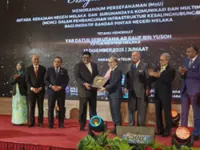When asked why they use TikTok for educational purposes, 60% of survey respondents said the app is easy to access, 57% said it's easy to understand, 51% said there's a lot of content, and 47% said it's free, according to the Study.com survey. — Photo by Olivier Bergeron on Unsplash
Students are increasingly turning to social media platforms when they need to research topics for school.
One of those platforms is TikTok, a video-sharing platform popular with K-12 students of various ages. Kids ages 4 to 18 spend an average of 91 minutes per day watching TikTok videos, according to data from parental control software maker Qustodio.
Already a subscriber? Log in
Save 30% OFF The Star Digital Access
Cancel anytime. Ad-free. Unlimited access with perks.





